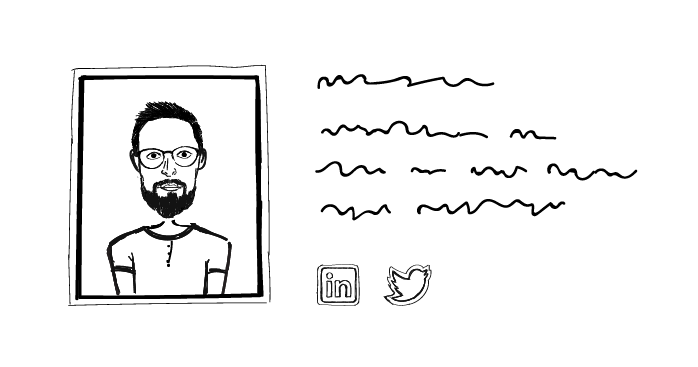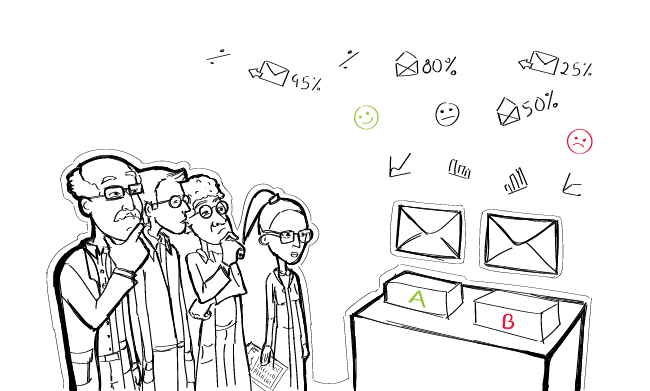The moment you get an interested reply to your cold email… That’s when you realize that the entire process of defining your ICP, looking for prospects, finding their contact data, was not a waste of time. This is the moment when you get rewarded for your hard work and effort. This is the moment we are all waiting for. But as soon as you handle the initial excitement, you actually need to come up with a reasonable response. Here are a few points you should pay attention to, if you want to keep an interested prospect interested.
#1 Understand your prospect’s intentions
Read their answer. But I mean really read it and understand it. Try to presume what they expect from you.
- Do they have all the information they should be provided with?
- Do they have some doubts or additional questions?
- Do they properly understand what you’re offering them?
- Have they been on your website for more information?
- Are they currently using a competitive solution?
- Are they indeed your ideal prospects?
I know that all these questions may seem a lot. But you really need to ask them to yourself when talking to your prospect, and try to get as many answers as you can.
#2 Respond as quickly as possible
Timing is crucial here. You shouldn’t keep your prospect waiting too long. If you’re able to respond within minutes, you can really impress them and earn some points from the very beginning. If you respond immediately, you’re creating the sense of live human-to-human conversation. They should be thinking, “ok, so there’s actually a person sitting on the other side of the screen, ready to talk to me.” Because in the end, this is what you want to have with your prospect – a real, human-to-human relation.
Few companies respond to emails within minutes nowadays. Therefore, a quick response is what makes you stand out from the crowd. Additionally, you’re making the conversation dynamic and you use the gate to your prospect’s attention, which they’ve just opened for you.
For them, now’s the moment when they’ve read your email. Now’s the moment they’ve seen your company name and checked your website. Now’s the moment they’ve become interested or thought about a question to you. Therefore, now should be the moment you respond. Not in 2-3 days – now.
That’s why it’s a good idea to send your campaigns during your working hours, and not necessarily at 9 AM of your prospects’ timezone. It’s obvious you won’t be able to respond to all emails within minutes, because after all, it’s them who choose the time to respond to you. So there’s always a possibility they will send you an email when you’re asleep. But sending them an email at your working hours, you’re increasing the chances of getting a response at a time when you’re there to immediately continue the conversation.
#3 Keep it about them
Remember that from this moment on, your mission is to help your prospect reach their specific business goals (ideally, using your solution). In order to help them the best you can, you need to know as much as you can about their company, their business goals, their target group, their workflow, etc. Don’t get overexcited about presenting your solution’s awesome features. Keep the conversation about them, listen and learn as much as possible. Allow them to build some individual context for your offer.
#4 Stay personal
This is a kind of a follow-up to the point above. If your cold email was personalized enough to get them to respond, your further emails can’t be just templates you can copy and paste as a universal response. Even if you do have a template to use, you can use just a part of it. Make sure to add a personal touch and let them feel they’re talking to a living and breathing person.
#5 Don’t pour on them everything you have
Try to keep the email conversation interesting. If you send them a full offer, all your features listed, an infographic, a link to your calendar, and a PDF attached, they may feel like it’s to too much for them to digest. It’s your job to learn their exact needs before you send them anything. As soon as you have some specific context, you can pick the most relevant parts of your offer and talk about the benefits that are the most appealing to your prospect. Because the most attractive offer should be perfectly adjusted to your prospect’s individual business goals.
#6 Answer their question(s)
If they have some specific questions (and they will have some, if you lead the conversation carefully and stay focused on them) give them answers, or ask more questions if something needs clarification. Don’t try to avoid answers just to pull them straight to a phone conversation. That may be really irritating to them and you may just scare them off. If they decide they’re not ready for a phone call, and you’ll be trying to push them to make that call anyway, you can lose a prospective customer. It’s OK to keep the conversation on email for a longer time. When the time is right for a call, you’ll know it. Don’t force it.
#7 Don’t push them to buy
Don’t try to make the deal go fast and straight to a close. Listen more than you speak. Investigate, listen, and learn. If you’re being pushy and selfish, you’re not allowing the prospect to make a genuine buying decision. If you’re trying to force the decision on them, they won’t really feel that they need your solution. And they do need to have this feeling, if they are to become your loyal customers.
Your job as a sales person should be to make them feel that they need and want your product or service. And you can best do that by focusing the whole selling process entirely on them and showing them how they can employ your solution to reach their business goals. At Woodpecker, we’ve learned that the most considerate helpers are the most efficient sales people.
#8 Don’t expect self-service from them
Let me use an example to show you what I mean by expecting self-service. Imagine we’ve got an interested reply, and we quickly respond with a message like this:
Thanks for your reply. It’s great that you’re interested! Here’s the link to our free trial signup page. If you have any questions, here’s my calendar.
What just happened here? We were trying so hard to start a conversation with the prospect. We sent them a personalized opening email, we sent them follow-ups, we were patiently waiting for them to reply. And once they did, we abandon them. Just like that. “Here are the links! Have fun!”
Yes, some prospects will proceed by themselves. They will sign up for a trial or schedule a demo in your calendar. But you shouldn’t ever turn your back on an interested outbound lead, because doing so, you’re abandoning the possibility to talk to them, learn from them, and build a valuable B2B relation with them.
Remember that the moment you get an interested reply is when your relation with the prospect barely starts. The relation requires to be nourished and well-tended. Outbound leads need more attention than inbound leads because, in most cases, they’re at a very different stage of their buyer’s journey when they start talking to you. They’re at the very beginning. They probably haven’t done any research yet. They might even not know how your solution is going to help them exactly.
It’s your job as a sales person to take your prospect’s hand and show them around. They need your attention. And you need precious information, which only they can provide, in order to actually help them and, as a result, sell to them. So don’t resign from talking to them. You’ll miss so much by doing that.
#9 Always define the next step
Like in every relation, it’s important that both sides know what to expect from each other and when to expect it. That’s why, each of your emails, or phone conversations, should end with a clearly defined next step. Tell your prospect what you are going to do and establish, what they should do before your next contact. This way, you’ll control the flow of the relation and, on the other hand, they’ll know what they can expect from you.
By just giving them a link to your free trial, just like I described in the previous point, you lose that control and you’ll have to try really hard to gain it back. Make sure your interested prospect is never surprised that you sent them another email, or are calling them. Make sure they never wait too long for you to take a next step you promised to take. Set some transparent rules and steps that both of you will follow.
What’s in it for you?
I always enhance the importance of experimenting and learning by experience in the process of outbound outreach. The experimenting and learning part should not end at the stage of creating your email campaigns. The more interested prospects you talk to, the better you’ll be at interpreting their intentions, listening to them, and adjusting your offer to their needs.
Those 9 hints are just a synthesis of our own experiences at Woodpecker, and you shouldn’t treat them as more than that. I just want you to give it a thought and test the tips while talking with your own interested prospects to verify how they will work for you – your company, your prospects, your sales workflow.
Hope this helps. If there’s something I’ve been missing in this post, please let me know your own hints in the comments below. I’d love to learn from you as much as I can.
READ ALSO

Our Customers Taught Us A Lot About Cold Emailing, Here Are 5 Top Tips
What is more valuable than first-hand advice from companies who grew with cold email outreach? I’ve put together a list of top 5 tips that can help you excel in running email campaigns. Let’s get straight to the point.

A Little Big Thing – What Do I Put in My Email Signature? (Updated)
What do you think is the first thing you need to start sending emails? Good copy. Sure, but even before that. A list of prospects. Obviously, but before that. It may seem kind of confusing and not so obvious, as the thing you need first is actually at the end of your email. It’s a signature.

My Open, Reply or Interest Cold Email Metrics are Low, What Can I A/B Test?
Cold outreach needs a lot of experimentation before you get it right. You can tinker with cold email copy, subject line, CTA, and other elements to optimize your cold email. However, how do you know what to focus on?

